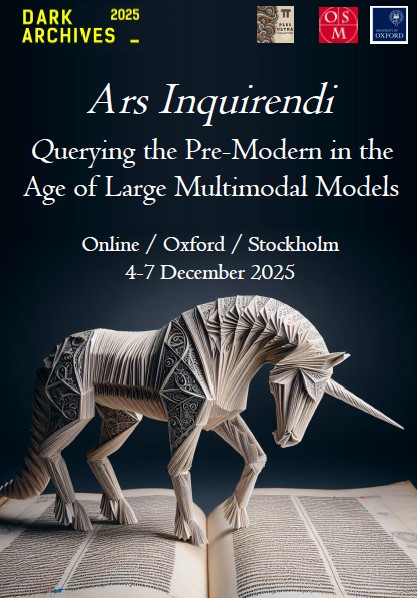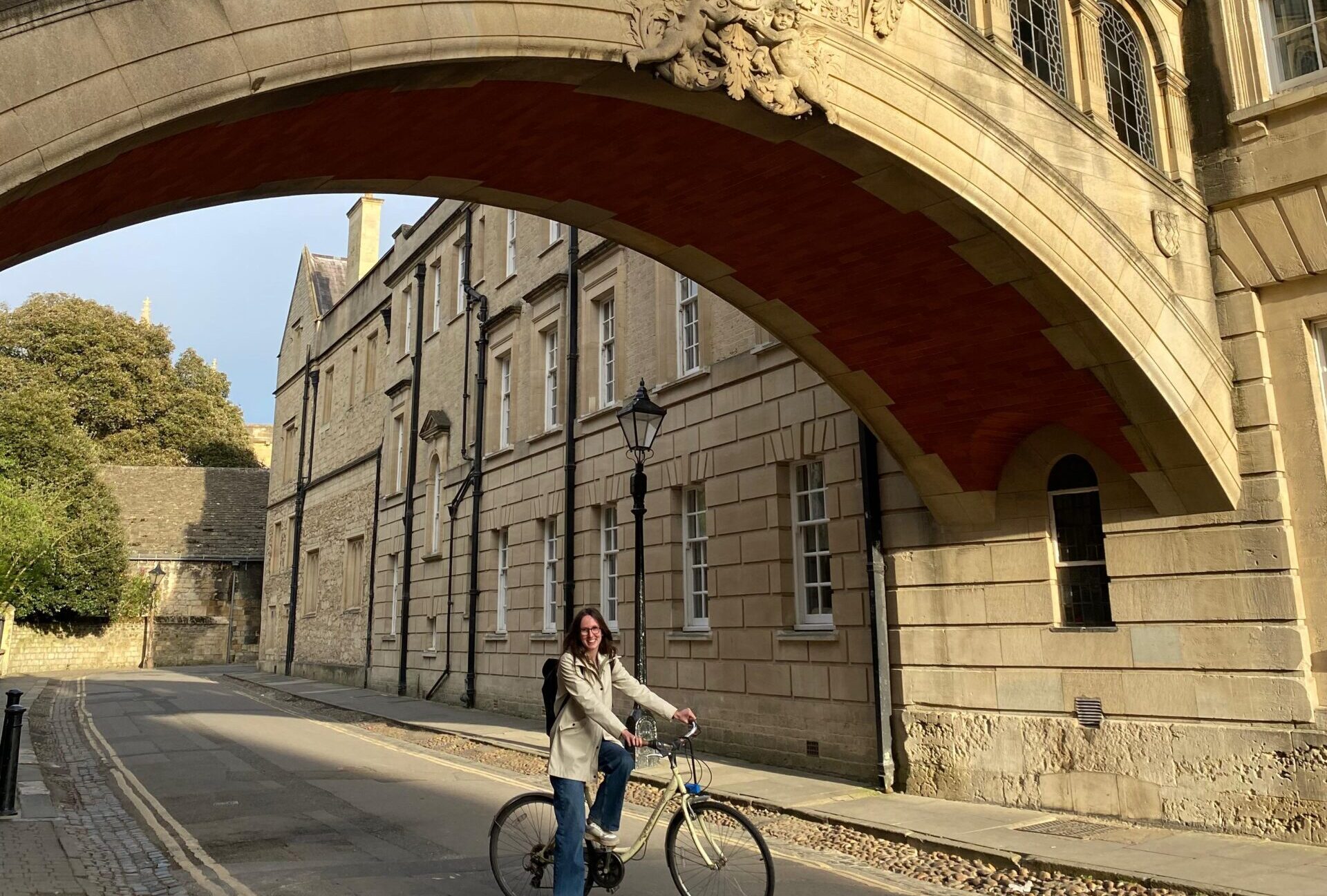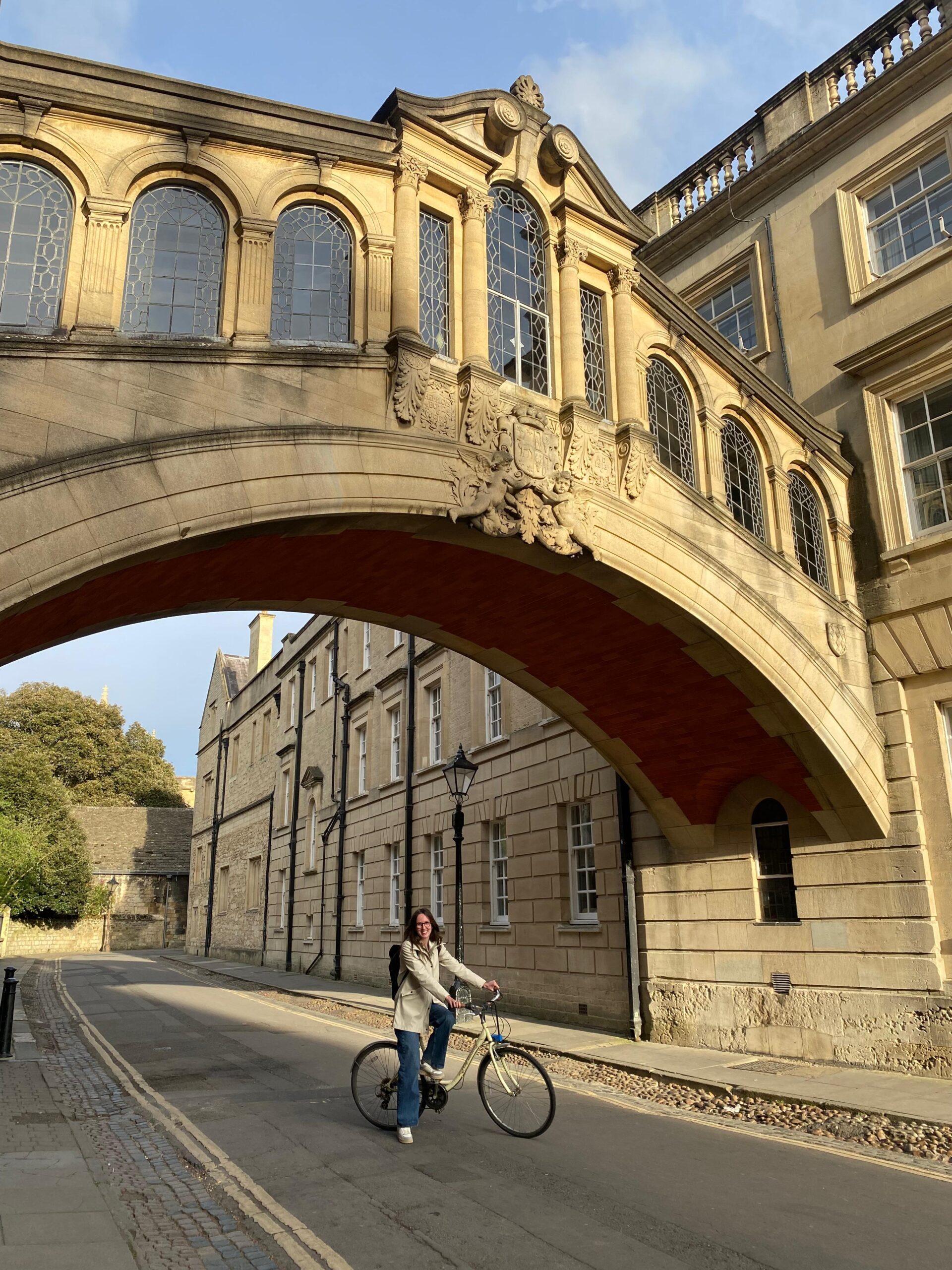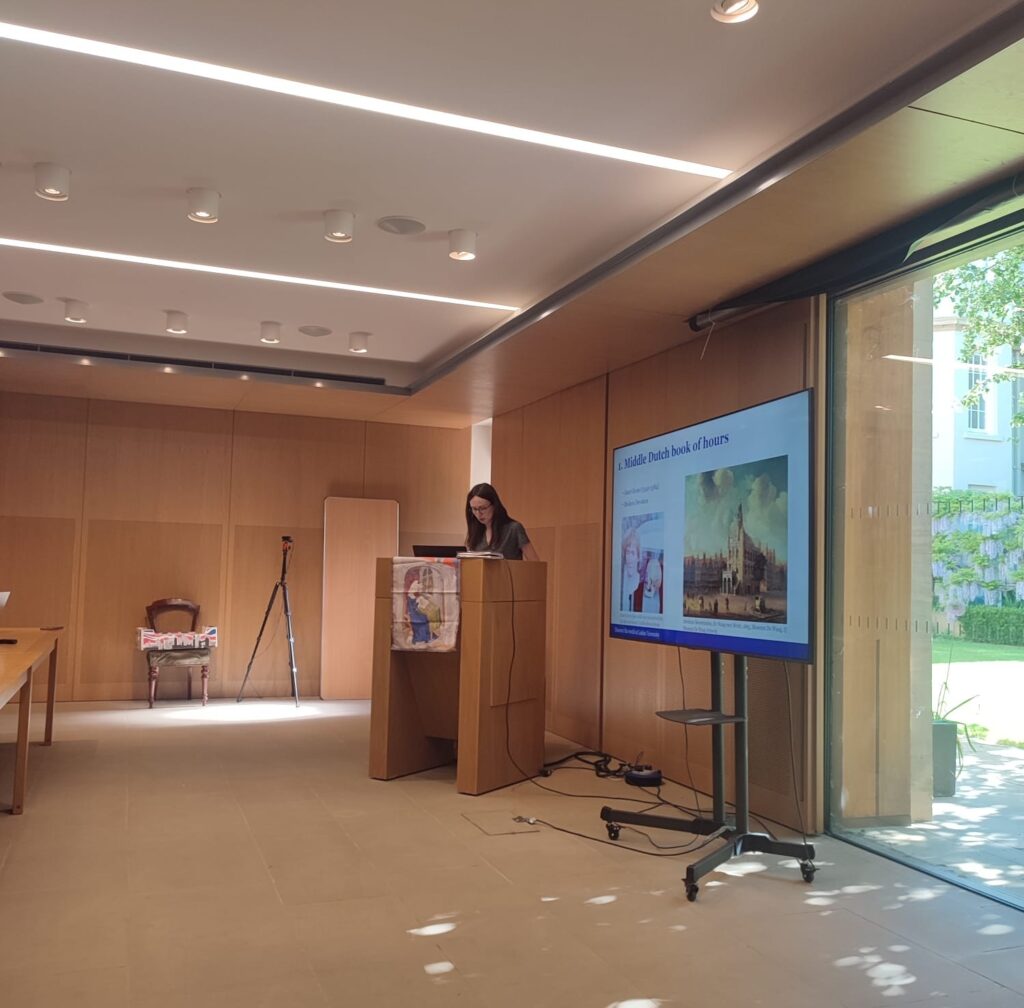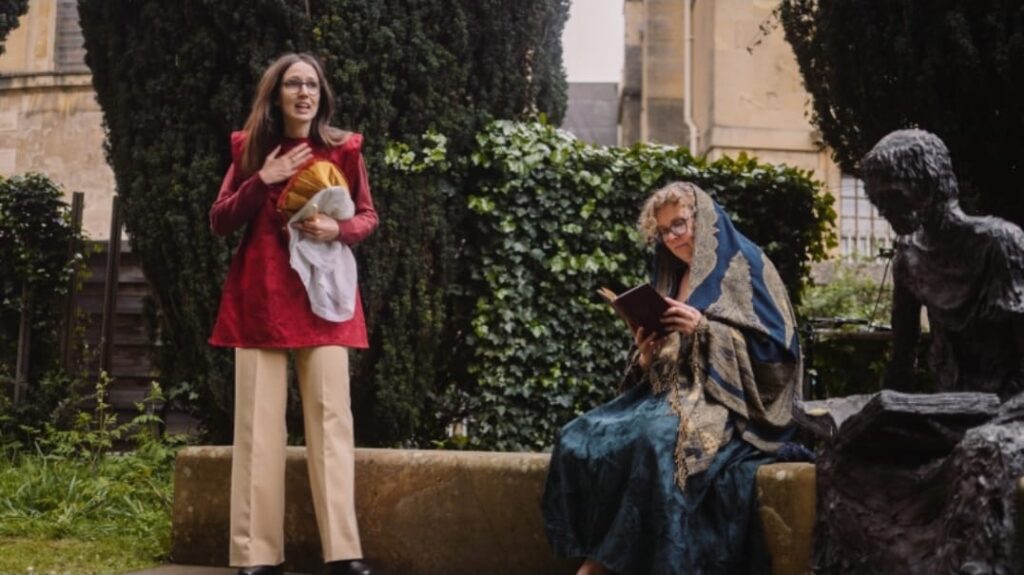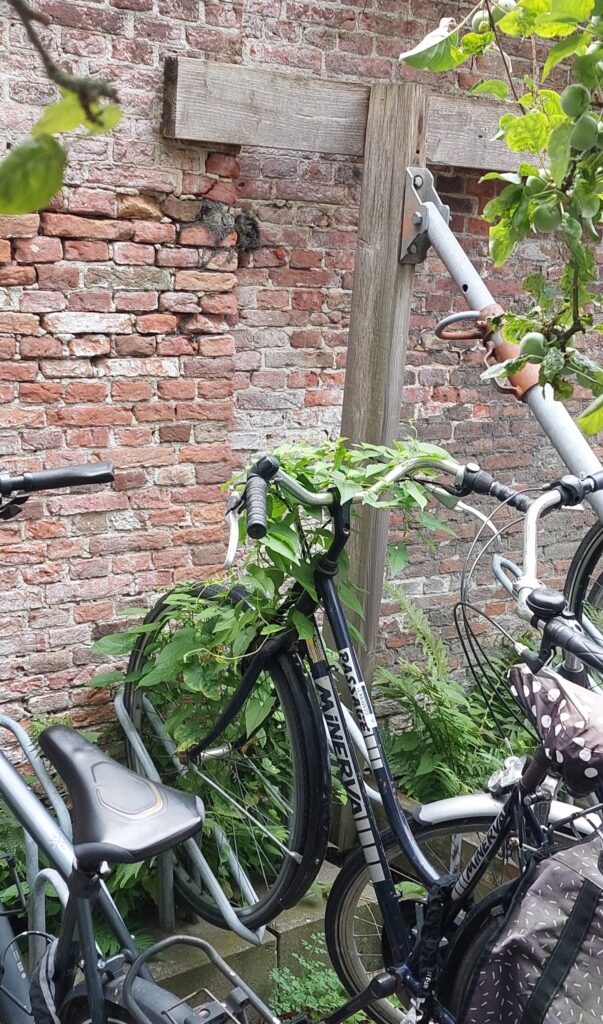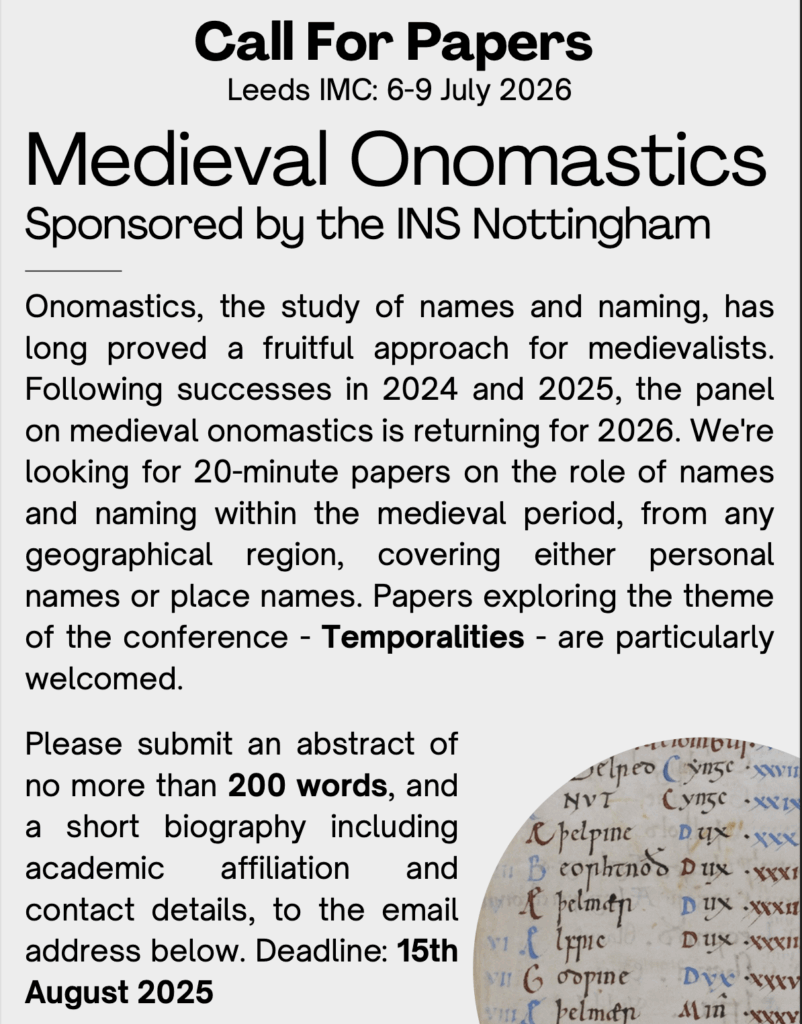In April 2025, the Guild of Medievalist Makers was launched, co-founded by Eleanor Baker, Kristen Haas Curtis, and Laura Varnam. The Guild was the grateful recipient of an Oxford Medieval Studies Small Grant in Trinity Term 2025 to support the launch of their website and to assist with publicity materials for their first two conference appearances this summer. In this blogpost, Oxford co-founders Eleanor Baker and Laura Varnam introduce the Guild and its activities.
The Guild of Medievalist Makers is a newly formed organisation for academic and academic-adjacent creatives and makers dedicated to furthering creative-critical practice in the humanities and making space for creative play.
The Guild’s founders are medievalists who make: Eleanor Baker is a linocut artist (who produced the cord in our Guild logo, more on that below!), Kristen Haas Curtis is a cartoonist and creative writer, and Laura Varnam is a poet. We founded the Guild in order to connect with other creative medievalists, to foster future collaborations, and to promote the burgeoning field of creative criticism in the humanities.

Our mission statement is embodied by the acronym CORD: Community, Outreach, Recognition, Development. Our website fosters Community by providing a dedicated and accessible online space for medievalist creatives to find each other and for academics who might be looking for creative partners to get in touch with us.
- Finally, we support the Development of members’ creative-critical skills by running online and in person events, including co-working events and workshops, as well as maintaining an online bibliography of resources and scholarship.
This summer, co-founder Laura Varnam represented the Guild at two important conferences in Medieval Studies: the Middle Ages in the Modern World at King’s College, London (https://themamo.org/) and the Gender and Medieval Studies conference at Christ Church Canterbury (https://medievalgender.co.uk/2025-canterbury/)

At MAMO, Laura ran a stall advertising the Guild and she had chats with lots of delegates about their creative-critical work in medievalism. We’re very grateful to everyone who subsequently signed up to join the Guild at MAMO! (Our sign-up page is here: https://www.guildmedmak.com/join-the-guild)

At the Gender & Medieval Studies conference, Laura also shared our newly printed Guild postcards and pin badges, and she advertised the Guild to delegates.
If you’d like to join the Guild please visit our website. And we’re very grateful once again to OMS for their financial assistance in launching the Guild!



